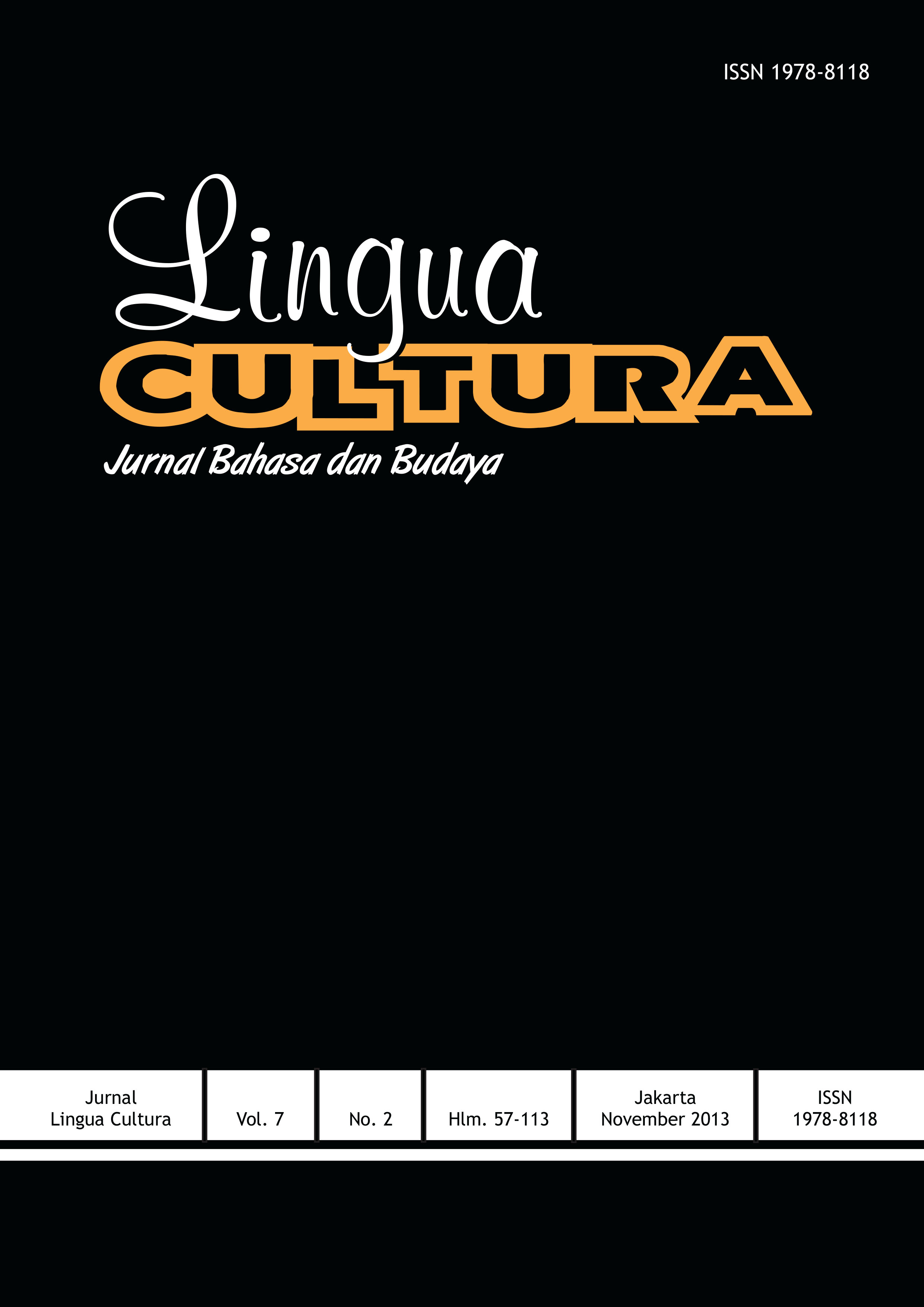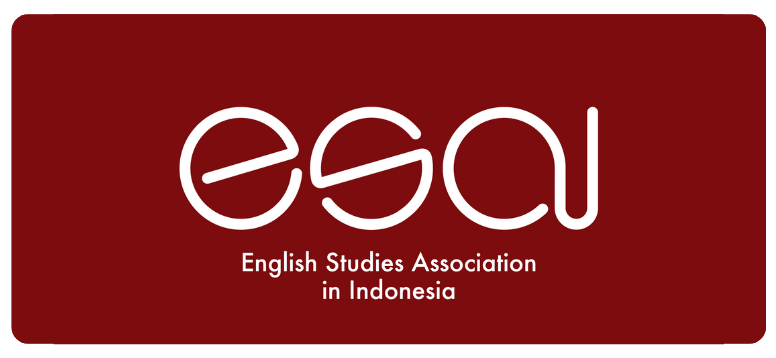Bilinguality and Socioeconomic Status (SES): Approaching Non-Singular Factor to a Child’s Cognitive Development
DOI:
https://doi.org/10.21512/lc.v7i2.427Keywords:
bilinguality, sosioeconomic status, cognitive development, childrenAbstract
Article attempted to argue that bilingualism have positive contributions toward a child’s cognitive development. By applying library research the discussion is focused on the contribution bilingualism had in mitigating socioeconomic detrimental effects on a child’s learning. Article started with discussing aspects of cognition, especially those shown through speech productions, of a bilingual child, then moving forward to discuss previous findings and arguments from the research pertaining to the issue of low socioeconomic status (henceforth SES) and cognition. Finally, the discussion concluded that bilingualism should be discussed as a complex system of learning and not as separate strands of a child’s learning.References
Adesope, et al. (2010). “A systematic review and meta-analysis of the cognitive correlates of bilingualismâ€. Review of Educational Research, Vol. 80, No. 2, pp. 207-245.
Bernstein, B. (1961). “Social class and linguistic development: a theory of social learningâ€. In A. F. Halsey, Education, economy and society (pp. 288–314). New York: Free Press.
Bialystok, E. (1997). “Effects of bilingualism and biliteracy on children’s emerging concepts of printâ€. Developmental Psychology, pp. 429–440.
Bialystok, E. (2001). Bilingualism in Development: Language, Literacy, and Cognition. Cambridge: Cambridge University Press.
Bialystok, E. (2010, February). “Cognitive and Linguistic Processing in the Bilingual Mindâ€. Current Directions in Psychological Science, Vol. 19, No.1, pp. 19-23.
Bialystok, E. (2011). “Reshaping the Mind: The Benefits of Bilingualismâ€. Canadian Journal of Experimental Psychology, Vol. 65, No. 4, pp. 229-235.
Bohlmann, N. H.-P. (n.d.). Reflections on Rocontextualizing Bernstein’s Sociology in Teachers’ Instructional Strategies. Retrieved October 16, 2013, from http://cerme8.metu.edu.tr/wgpapers/WG10/WG10_Bohlmann_Straehler_Pohl.pdf
Bullock, B. a. (2009). The Cambridge Handbook of Linguistic Code-Switching. (B. a. Bullock, Ed.) Cambridge: Cambridge University Press.
Chomsky, N. (1981). Lectures on government and binding. Dordrecht: Foris.
Chomsky, N. (1995). The minimalist program. Cambridge, MA: MIT Press.
Danzig, A. 1995. “Applications and distortions of Basil Bernstein’s code theoryâ€. In A. Sadovnik, Knowledge and Pedagogy: The sociology of Basil Bernstein. Norwood, NJ: Ablex.
Douglas, M. (n.d.). A History of Grid and Group Cultural Theory. Retrieved from http://projects.chass.utoronto.ca/semiotics/cyber/douglas1.pdf
Goodz, N and Poulin-Dubois, D. (2001). “Language differentiation in bilingual infantsâ€. In J. a. Cenoz, Trends in Bilingual Acquisition, pp. 95-106. Amsterdam: John Benjamins.
Grosjean, F. (2002, February). Interview on Bilingualism. (J. Navracsic, Interviewer) Retrieved from http://www.francoisgrosjean.ch/interview_en.html
Hamers, Josiane. F and Blanc, Michel H. A. (2004). Bilinguality and Bilingualism. (1st Edition). Cambridge: Cambridge University Press.
Labov, W. (1972). Academic Ignorance and Black Intelligence. Retrieved from http://www.theatlantic.com/past/docs/issues/95sep/ets/labo.htm
Leikin, M. (2013). “The effect of bilingualism on creativity: Developmental and educational perspectivesâ€. Journal of Bilingualism, pp. 431-447.
McNab, G. (1979). “Cognition and Biligualism: a reanalysis of studiesâ€. Linguistics, Vol. 17, pp. 231-255.
Montrul, S. (2008). Incomplete Acquisition in Bilingualism: Re-examining the age factor. Amsterdam: John Benjamins.
Noble, K. G., Norman, M. F., Farah, M. J. (2005). “Neurocognitive correlates of socioeconomic status in kindergarten childrenâ€. Developmental Science, Vol. 8 No. 1, pp. 74–87.
Peal, Elizabeth and Lambert, Wallace E. (1962). “The relation of bilingualism to intelligenceâ€. Psychological Monographs, Vol. 76, pp. 1-23.
Pinker, S. (1994). The Language Instinct. New York: Basic Books.
Sadovnik, A. (2001, vol. XXXI, no. 4, December). Basil Bernstein (1924–2000). Prospects: the quarterly review of comparative education (Paris, UNESCO: International Bureau of Education), pp. 687-703.
Treffers-Daller, J. (2009). Code-switching and transfer: an exploration of similarities and differences. In B. a. Bullock (Ed.). Cambridge: Cambridge University Press.
Troike, R. (1984). “Social and cultural aspects of language proficiencyâ€. In C. Rivera, Language Proficiency and Academic Assessment (pp. 10). Clevedon: Multilingual Matters.
Wei, L. (2001). The Bilingualism Reader. New York: Routledge.
Yip, V. A. (2007). The Bilingual Child. Cambridge: Cambridge University Press.
Downloads
Published
How to Cite
Issue
Section
License
Authors who publish with this journal agree to the following terms:
a. Authors retain copyright and grant the journal right of first publication with the work simultaneously licensed under a Creative Commons Attribution License - Share Alike that allows others to share the work with an acknowledgment of the work's authorship and initial publication in this journal.
b. Authors are able to enter into separate, additional contractual arrangements for the non-exclusive distribution of the journal's published version of the work (e.g., post it to an institutional repository or publish it in a book), with an acknowledgment of its initial publication in this journal.
c. Authors are permitted and encouraged to post their work online (e.g., in institutional repositories or on their website) prior to and during the submission process, as it can lead to productive exchanges, as well as earlier and greater citation of published work.
USER RIGHTS
All articles published Open Access will be immediately and permanently free for everyone to read and download. We are continuously working with our author communities to select the best choice of license options, currently being defined for this journal as follows: Creative Commons Attribution-Share Alike (CC BY-SA)


















